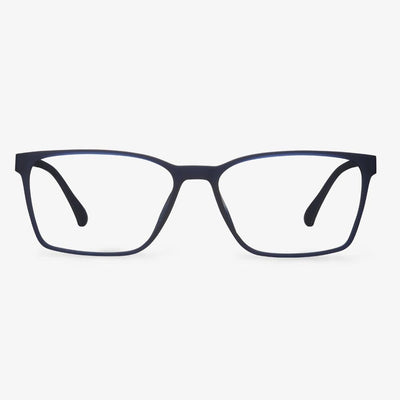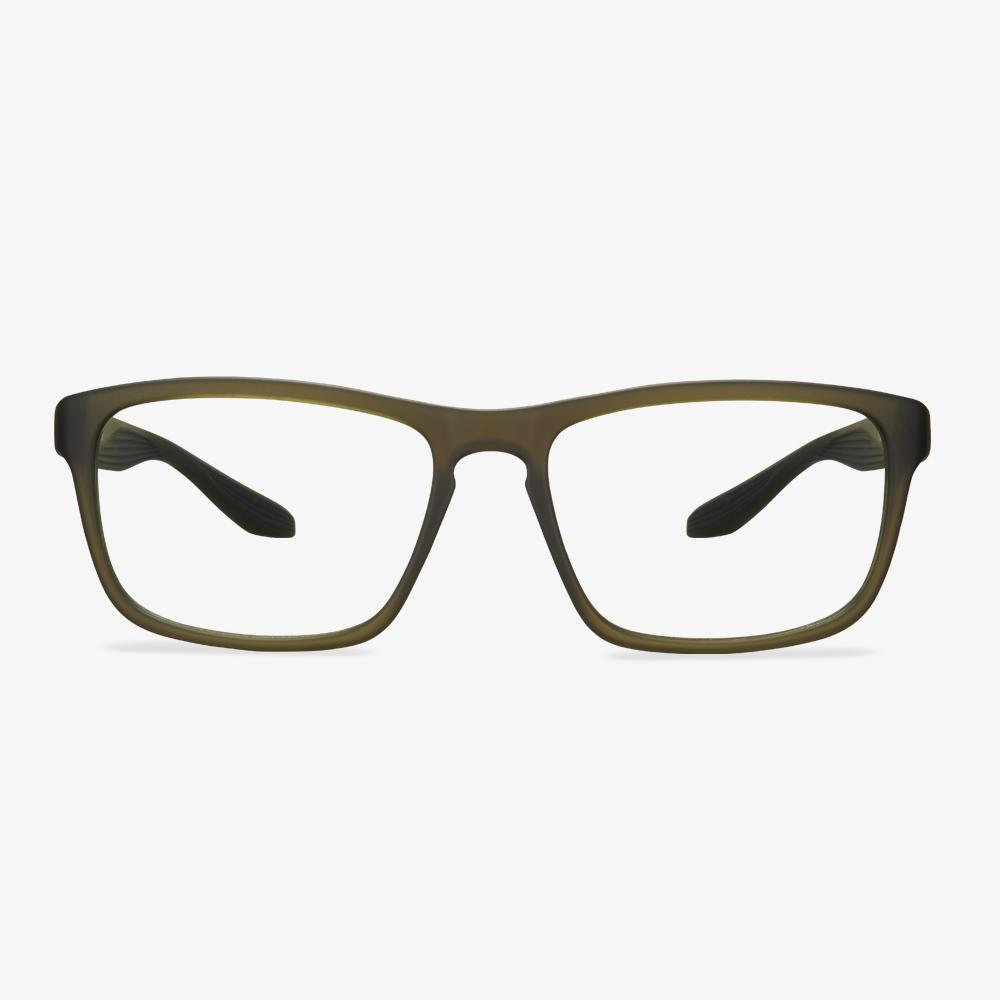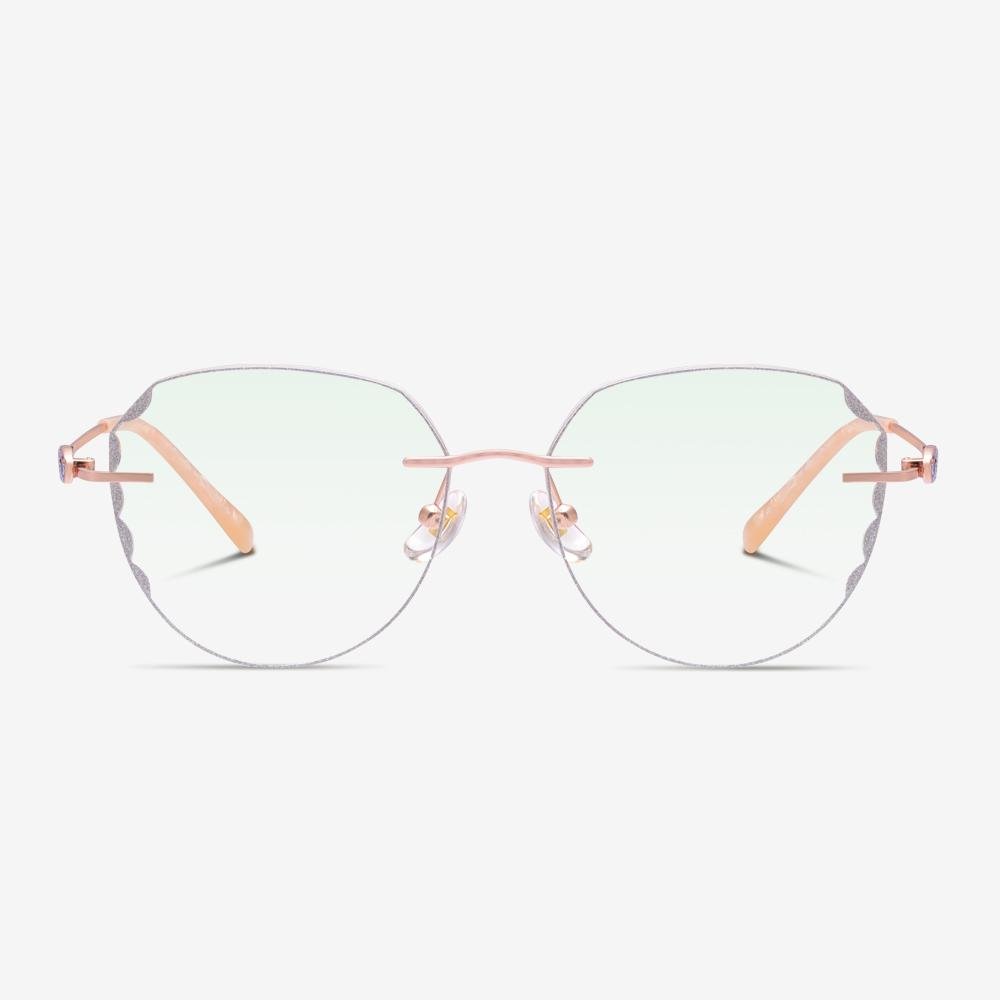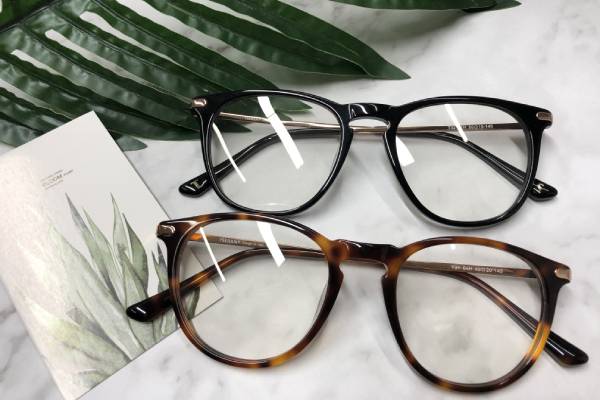Step-by-Step Glasses Size Guide
In this section, we will show you how to perform glasses measurements. But the first thing is to know what face shape you have. If you do not know, click here to have a check.
Then you need to know where to find the size measurement of your glasses. In general, you will find numbers that look like this 51-17-145 at the temples of your eyeglasses. Of course, these numbers come at different meanings.
The first number often refers to the lens width. Lens width is the horizontal diameter of the lens at its widest point. In optometry, another term is eye size.
The second number often means the bridge width. Bridge width is the part that joins the two lenses and sits over the nose. Some refer to this as the gap. The bridge width varies between 14 and 24 millimeters.
The third number often means the temple length. The temple is the arm that keeps the sunglasses on your face. That arm extends to the part that hangs on the ears. The length is usually 135, 140, or 145 millimeters.
Lens height measures the size of the lens vertically, that is from the top to the bottom of the lens. Although sizes may differ depending on the brand, the standard size is somewhere between 32 and 38 millimeters.
Why My New Glasses Give Me a Headache?
The new glasses make me dizzy or headaches. You may have these symptoms when getting a new pair of glasses. Why do the new glasses give me a headache? When getting used to the new glasses, your eyes and brain have to work harder to see clearly through your new lenses. The more your strain to see, the more likely you are to get a headache.
So, how long to adjust the new glasses? It may take a few days. If you still feel uncomfortable after wearing the new glasses for a few weeks, you should ask for the eye doctor or the optician to check whether your glasses are made correctly and check whether your prescription is correct.
In addition, if you want to get a new pair of glasses, you can try Koalaeye Optil, which is an online optical store and helps you to prescribe your eyeglasses with great convenience. Koalaeye Optical provides various glasses, including progressive glasses, blue light blocking glasses, sunglasses, driving glasses, and different shape frames.
The correct method for lens cleaning
Wet it with water first, and then add a little detergent or hand sanitizer to each lens. Dip your fingers to the back of the lens, and then scrub with your fingers. Be careful not to use too much force to prevent the lens from being worn out by grit.
The key here is to rinse. First of all, never use hot water, because hot water will cause the lens to expand due to heat, which will crack the film in the resin lens.
Finally, you should rinse with cold water, do not wipe with a cloth, because any glasses cloth or suede can not perfectly wipe the lens, even the more you wipe it, the more indistinct it gets. If there is hard dust in the cloth, it will scratch the lens.
Disadvantages of Progressive Lenses
It is limited in applicable range. Progressive multi-focus lenses have no limit in strength and can be worn for myopia, presbyopia, or moderate astigmatism, but they are not suitable for everyone. Now there are more than two categories of asymptotic focus lenses, one is hard and the other is soft. A person who can understand and adapt to the temporary discomfort that progressive multi-focus lenses begin to produce can have a pair of glasses. If you have severe symptoms such as high blood pressure, dizziness, or have a misunderstanding on progressive multiple focal lenses, and you are unwilling to adapt to them, it will be difficult to try.
Benefits of MR Lenses
It is made of MR series material of Mitsui Chemical, Japan. The biggest advantage is that it is both thin and has good optical properties. Besides, the material has good impact resistance and toughness, so it is not easy to be deformed or broken. Wearing such lenses not only looks more beautiful, but clear and comfortable, and safe at ease. Using a lower density polyurethane material, the lens is lighter and thinner, making it more comfortable to wear. The higher machining success rate increases the processing efficiency and reduces the processing cost. The film compatibility and dyeing properties of MR™ are better than those of ordinary materials, which can improve the quality of functional lenses like photochromic lenses and myopic sunglasses. MR-8™ combines high refractive index, high Abbe number (for better imaging), and better processing performance, suitable for rimless, half-frame, and other glasses, which are less broken and safer. MR-7™ provides better dyeing performance, faster and more uniform color application, and can be used for myopic sunglasses. MR-8 Plus™ is safer and further improves the impact resistance of the lens while maintaining the high Abbe number of MR materials.
What Are Pinhole Glasses?
Pinhole glasses, also called stenopeic glasses, are plastic eyewear with hundreds of pinhole-sized perforations in place of lenses. Pinhole glasses are mostly used to improve refractive errors in the eye because they shield the eye from indirect rays of light which can distort vision. This would decrease the blur circle on the back of the retina.
The frame size has increased.
The larger the frame is, the more obvious it is now, so the edge glare will be more obvious when the lens is polished. It interferes with the visual effect. The frame height of the new glasses must be much larger than the height of the old glasses. Because when you buy big frame glasses, they must find out the pupil height when matching outfits. When you get glasses fitted at the opticians, the opticians don't measure the pupil height. That is, the balance line of the lens should be properly moved up when the lens is processed. If it is not moved up, it cannot be seen clearly.











































